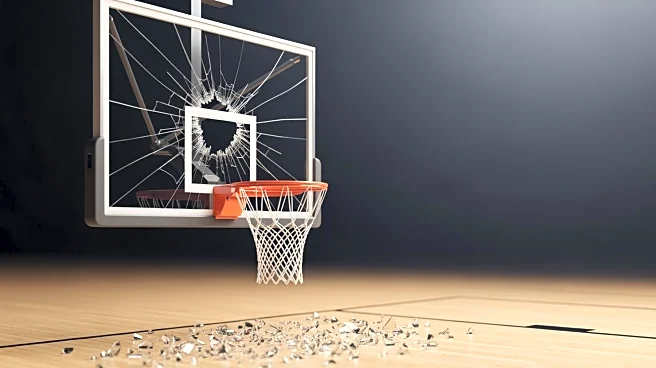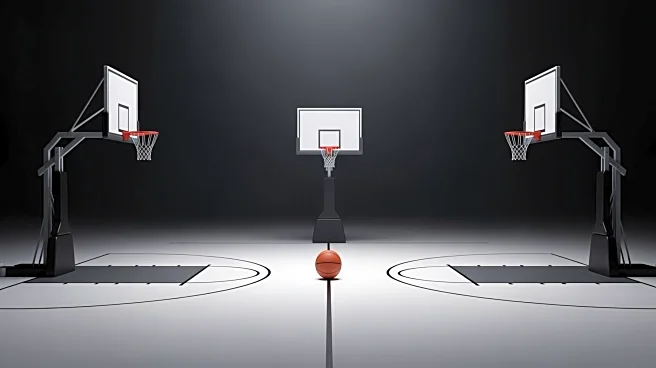What's Happening?
Victor Wembanyama, the 7-foot-4 center for the San Antonio Spurs, has altered his playing style this NBA season by reducing his reliance on three-point shots and focusing more on scoring near the basket.
After recovering from a shoulder injury, Wembanyama has returned with a new approach, emphasizing dunks, free throws, and midrange jumpers. This change has contributed to the Spurs achieving their first 5-0 start in franchise history, with Wembanyama scoring 40 points in the season opener against the Dallas Mavericks. His shift from perimeter shooting to a more aggressive paint presence has resulted in increased free throw attempts and improved scoring efficiency.
Why It's Important?
Wembanyama's strategic shift is significant as it challenges the modern NBA's focus on three-point shooting, potentially influencing other players and teams to reconsider their offensive strategies. His success in the paint could lead to a broader trend of centers returning to traditional roles, impacting team dynamics and game strategies across the league. For the Spurs, Wembanyama's improved performance boosts their chances of reaching the playoffs, a goal they have not achieved since 2019. His development as a dominant center could position him as a future face of the NBA, affecting marketing and fan engagement.
What's Next?
As Wembanyama continues to adapt to his new playing style, opposing teams are expected to develop strategies to counter his effectiveness in the paint. The Spurs will need to support him with strong perimeter play to balance their offense. Additionally, Wembanyama's ability to maintain his health and manage increased physical contact will be crucial for his long-term success. The Spurs' performance this season will be closely watched to see if they can capitalize on Wembanyama's growth and secure a playoff spot.
Beyond the Headlines
Wembanyama's transformation highlights the evolving role of centers in the NBA, where versatility and adaptability are increasingly valued. His shift may inspire young players to focus on developing a diverse skill set, blending traditional and modern techniques. This evolution could lead to changes in coaching strategies and player development programs, emphasizing a holistic approach to training.












